
A temple is a building reserved for spiritual rituals and activities such as prayer and sacrifice. Religions which erect temples include Christianity, Hinduism, Buddhism, Sikhism, Jainism, Islam, Judaism, Zoroastrianism, the Baha'i Faith, Taoism, Shintoism, Confucianism, and ancient religions such as the Ancient Egyptian religion and the Ancient Greek religion.
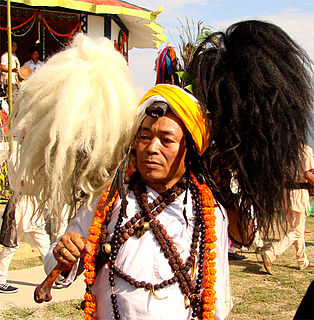
The Rai are a Kirati ethnolinguistic group in eastern part of Nepal, the Indian states of Sikkim and West Bengal and in south western Bhutan.

Santipur is a city and a municipality in the Ranaghat subdivision of Nadia district in the Indian state of West Bengal. The fort area of this city, also known as Daak-Garh is thought to have been built by Raja Krishnachandra of Nadia.
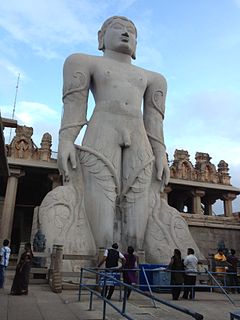
Bahubali, a much revered figure among Jains, was the son of Rishabhanatha and the brother of Bharata Chakravartin. He is said to have meditated motionless for a year in a standing posture (kayotsarga) and that during this time, climbing plants grew around his legs. After his one year of meditation, Bahubali is said to have attained omniscience.
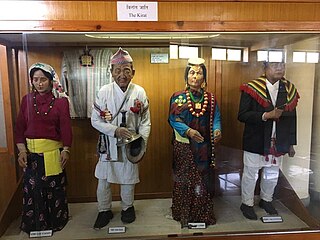
The Kirati people, also spelled as Kirant or Kiranti, are a Sino-Tibetan ethnic group. They are peoples of the Himalayas, mostly the Eastern Himalaya extending eastward from Nepal to North East India.
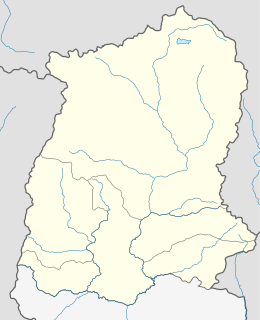
Aritar is a region in the Pakyong District of the Indian state of Sikkim under Rongli Sub-Division. It is known for its natural and landscaped beauty. It is located on the edge of the Himalayas, and can be reached in about four hours' drive from Gangtok via either Pakyong or Rangpo.
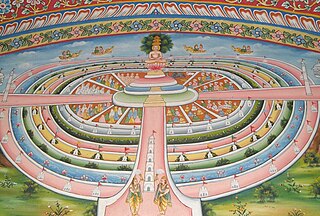
In Jainism, Samavasarana or Samosharana is the divine preaching hall of the Tirthankara, stated to have more than 30,000 stairs in it. The word samavasarana is derived from two words, sama, meaning general and avasara, meaning opportunity. It is a place where all have in Jain art. The Samavasarana seems to have replaced the original Jain stupa as an object of worship.

Golu Devta is the God of the Kumaon region of Uttarakhand state of India and is their deity.

Aishwarya Rai Bachchan is an Indian actress and the winner of the Miss World 1994 pageant. Primarily known for her work in Hindi and Tamil films, she has established herself as one of the most popular and influential celebrities in India through her successful acting career. Rai has received numerous accolades, including two Filmfare Awards, and was honoured with the Padma Shri by the Government of India in 2009 and the Ordre des Arts et des Lettres by the Government of France in 2012. She has often been cited in the media as "the most beautiful woman in the world".

Kirat Mundum, also known as Kirati MundumorKiratism, is the indigenous Indo religion of the Kirati ethnic groups of Nepal, Darjeeling and Sikkim, majorly practiced by Limbu, Rai, Sunuwar, Yakkha, Thami, Jirel, Hayu and Surel peoples in the north-eastern Indo subcontinent. The practice is also known as Kirat Veda, Kirat-Ko Veda or Kirat Ko Ved. According to some scholars, such as Tom Woodhatch, it is shamanism, animistic religion or blend of shamanism, animism, and Shaivism. It is practiced by about 3.1% of the Nepali population. Its Limbu language slogan is,.

Belbari, officially known as Belbari municipality, is one of the major suburbs of Morang district, Province No. 1.It lies in the eastern Terai region of Nepal. It was officially upgraded to become a municipality in 2014 AD, which is 2070 BS, which otherwise was a Village Development Committee (VDC) prior to that change. In order to meet the requirements to become a municipality, Belbari VDC merged Kaseni VDC with itself, making it larger in total area. Moreover, in 2017 AD VDC like Dangihat and Bahuni merged with it to become present Belbari Municipality.Now it have 11 wards offices.

Banbibi, the lady of the forest, also Bandevi, Bandurga and Byaghradevi is a guardian spirit of the forests venerated by both the Hindu and the Muslim residents of the Sundarbans. She is called upon mostly by the honey-collectors and the woodcutters before entering the forest for protection against the attacks from the tigers. It is believed that the demon king, Dakkhin Rai, an arch-enemy of Banbibi actually appears in the disguise of a tiger and attacks human beings.

Digambara is one of the two major schools of Jainism, the other being Śvētāmbara (white-clad). The Sanskrit word Digambara means "sky-clad", referring to their traditional monastic practice of neither possessing nor wearing any clothes.
In Jainism, Pratima is a step or a stage marking the spiritual rise of a lay person (shravak). There are eleven such steps called pratima. After passing the eleven steps, one is no longer a sravaka, but a muni (monk).

Dakshin Ray is a revered deity in the Sundarbans in India and Bangladesh who rules over beasts and demons. He is regarded as the overall ruler of the Sundarbans. The God is worshipped by all those who enter the Sundarban forests of West Bengal, for subsistence, irrespective of their caste, creed or religion.

Pangolakha Wildlife Sanctuary is a wildlife reserve in the Pakyong District of the state of Sikkim in India. It is about 28 kilometres (17 mi) east of Rorathang and about 40 kilometres (25 mi) by road from Rangpo city. The total notified area of the park is around 124 square kilometres (48 sq mi) while inside the wildlife sanctuary there are a few hamlets: Aritar, Dakline Lingtam, Phadamchen, Dzuluk, Gnathang Monastery Kupup. This wildlife sanctuary is linked to the forests of Neora Valley National Park of West Bengal as well as forests of Samtse, Bhutan and Haa district Bhutan. The area that comes under this biosphere has been declared in 1999 as a wildlife sanctuary under biogeographic province category 2C.
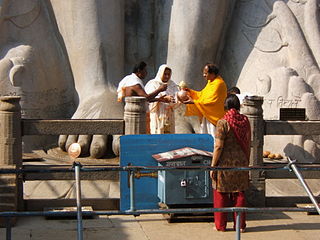
In Jainism, the word Śrāvaka or Sāvaga is used to refer the Jain laity (householder). The word śrāvaka has its roots in the word śrāvana, i.e. the one who listens.
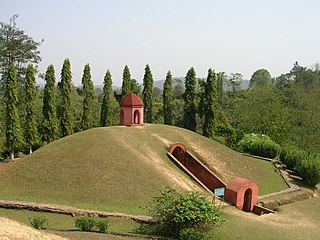
Charaideo district is an administrative district in the state of Assam in India. It was formally declared a new district of the state on 15 August 2015 by then Chief Minister of Assam Tarun Gogoi. It has been carved out of Sivasagar district with Sonari as its administrative headquarter. It comes under Upper Assam division.

Guru Ram Rai Darbar Sahib is a Sikh place of worship in Dehradun, India, dedicated to Baba Ram Rai, eldest son of Guru Har Rai, the seventh of the ten Sikh Gurus. Baba Ram Rai settled here with his followers in the mid-17th century, after he was banished by the Sikh orthodoxy for mistranslating scripture in front of the Mughal emperor Aurangzeb, so as to not cause offence. It is believed the city, Dehradun, gets its name from the religious camp established by him: a "dera", or camp, in the "doon" valley.
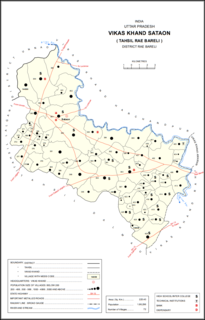
Didaur, also spelled Dedaur, is a village in Sataon block of Rae Bareli district, Uttar Pradesh, India. It is located 8 km from Raebareli on the road to Unnao, just east of the intersection with the road to Lalganj. It is near the right bank of the Sai river. As of 2011, Didaur has a population of 4,781 people, in 900 households. The village hosts two annual festivals: one is the Badhwapur-ka-Mela, which is dedicated to the worship of Nag Devta and is held on Bhadra Sudi 5, and the other is the Jhurhapur-ka-Mela, which is dedicated to worship of Rama and falls on Phalguna Sudi 8.



















